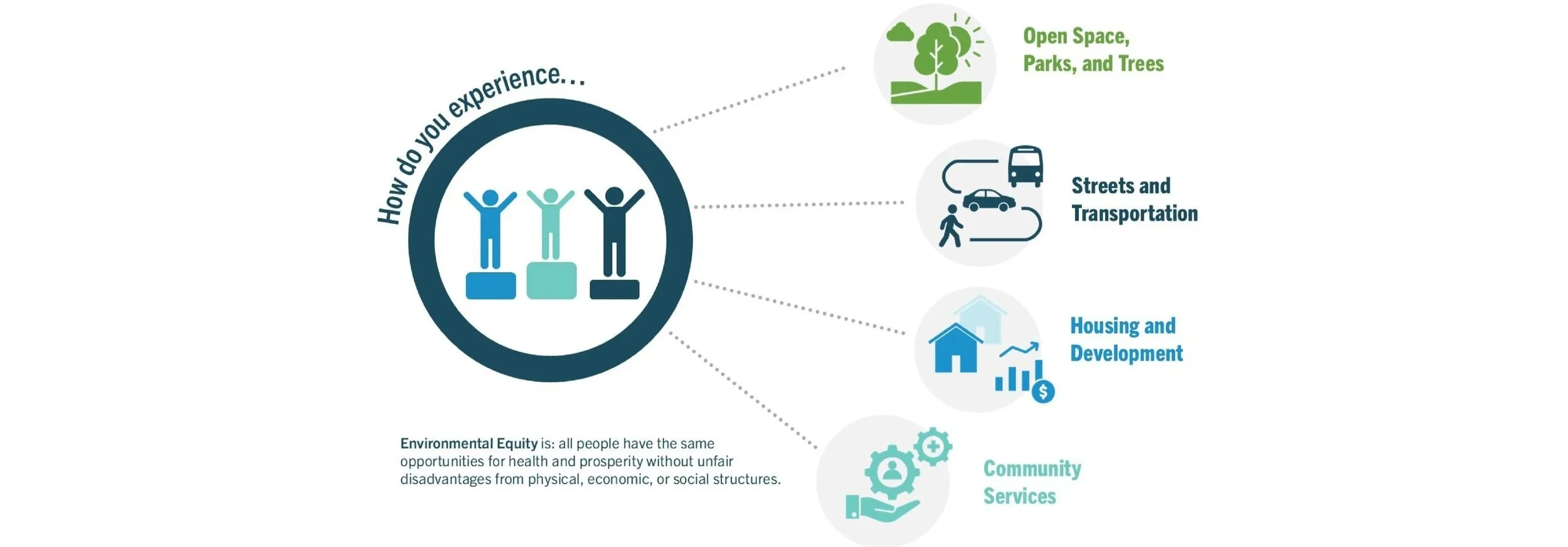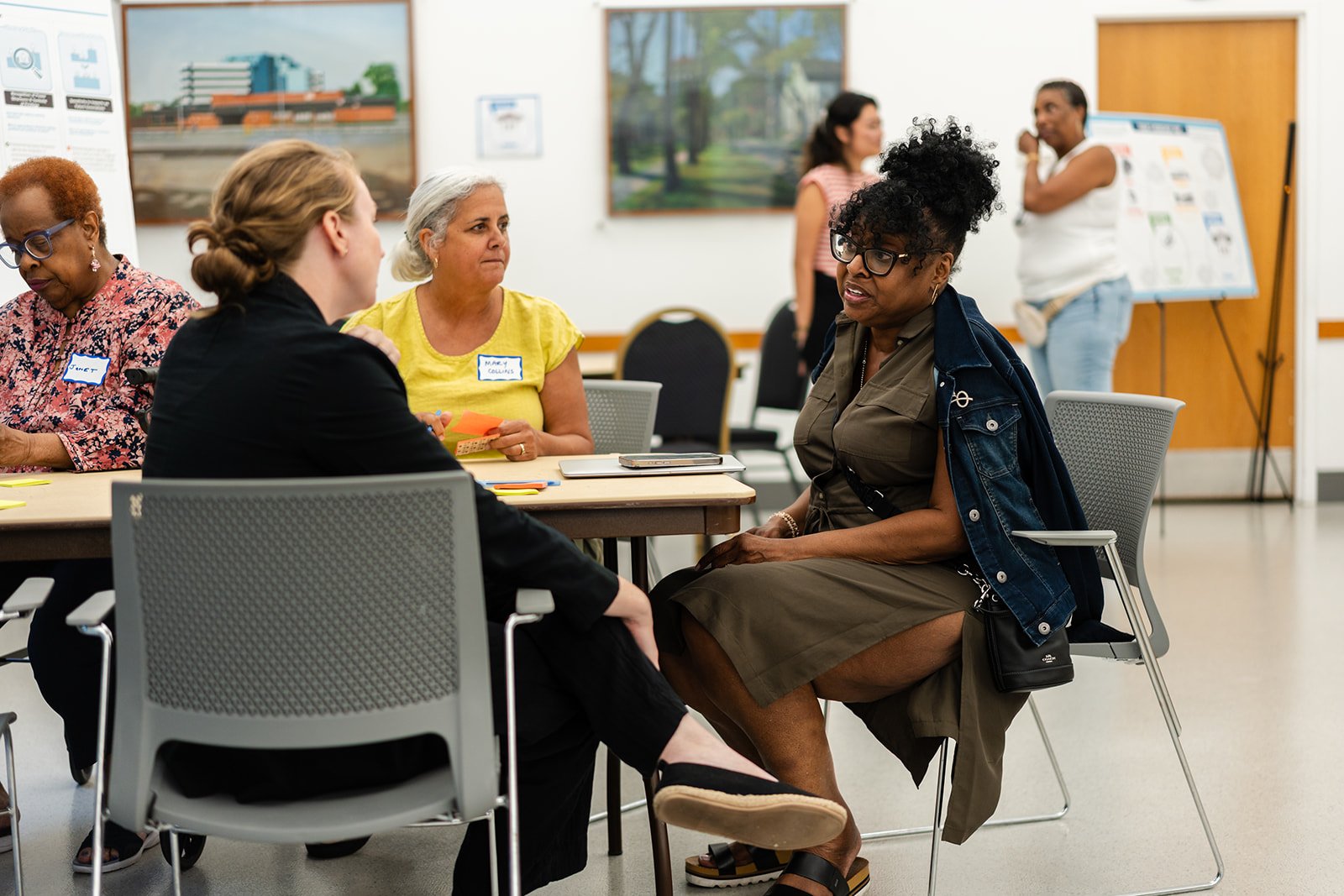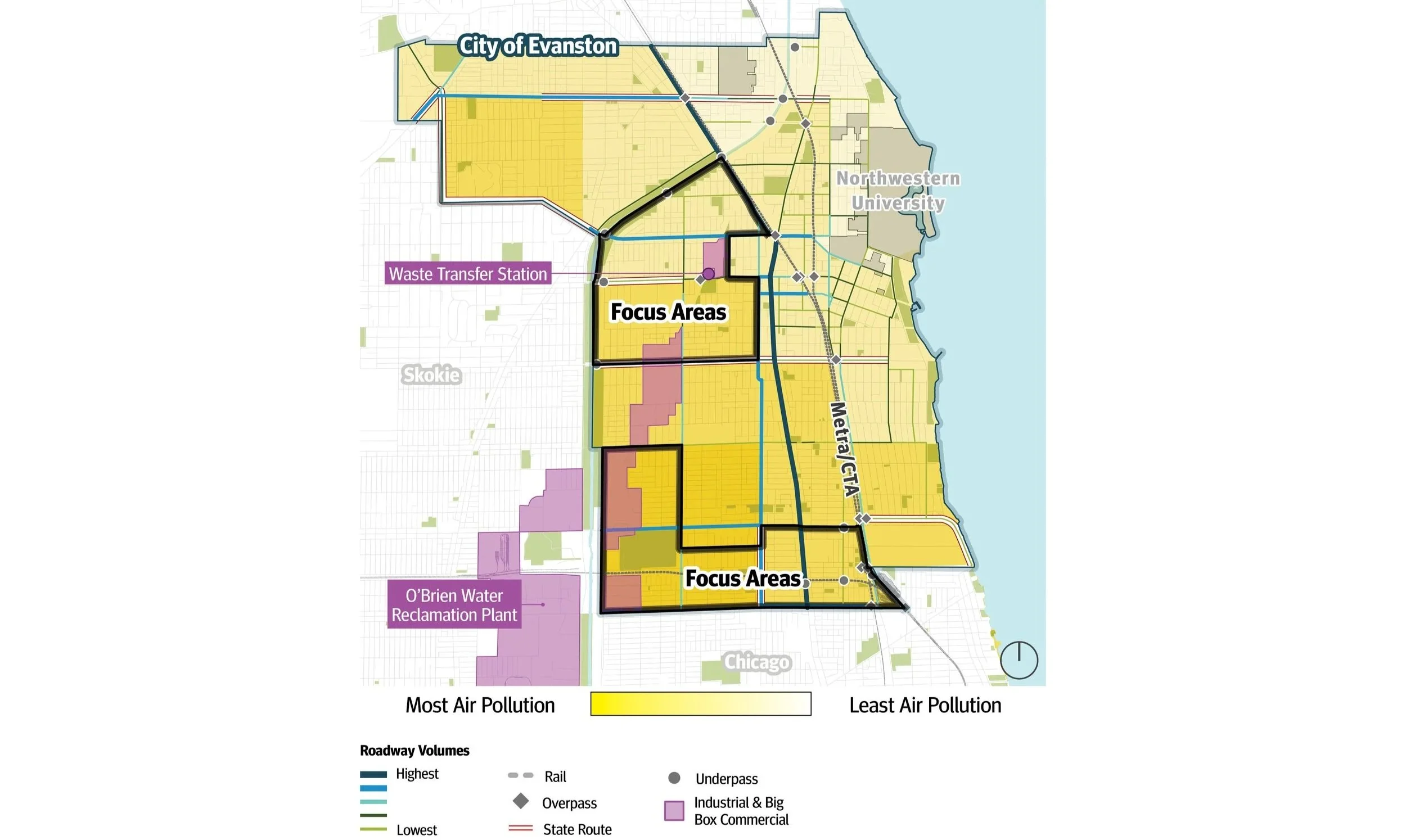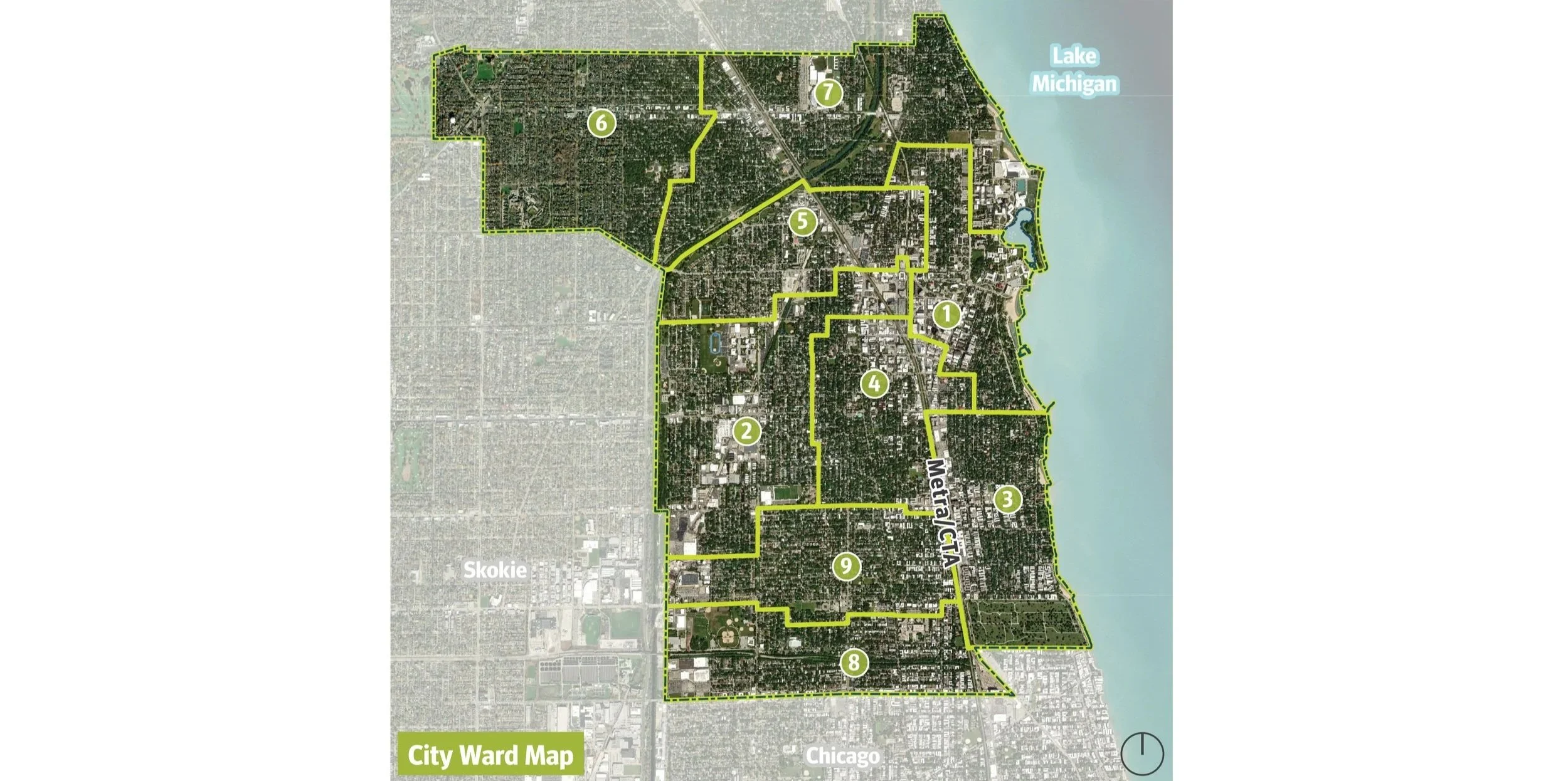
A Breath of Fresh Air! One Community’s Search for Environmental Justice
Discover how Evanston, Illinois is confronting environmental injustice by identifying harmful past policies and uncovering community-led solutions for a healthier, more equitable future for all.
Whether you realize it or not, your physical environment could be shaping positive, negative, or even unseen impacts to your personal health and well-being. Historic policies, land-use planning practices, zoning standards, and more, may be factors as to why your basement floods, why your neighbor experiences chronic asthma, or why your family can no longer afford to live within your neighborhood. Yet most of the significant negative environmental impacts tend to effect certain community populations, races, or income-levels more than others. Why is this?
Based on data from the AAMC Center for Health Justice, “a majority (62%) of U.S. adults believe that environmental injustice is a problem nationally, while a lower number believe it is a problem in their state (48%) or city/town (38%).” Additionally, through our own research, we’ve found that only a startlingly low number of cities and towns are self-reflecting and exploring how their community members have been generationally impacted by environmental inequities in addition to how they are impacted today. That’s why the City of Evanston, Illinois (a northern suburb of Chicago) is leading the way. Evanston has taken a proactive approach to examining how issues of environmental equity and justice affects their community head on.
“How do current and historic city policies and procedures
benefit some community members yet burden others?”
The MKSK team including CDTA, Revitalized Communities, and Added Dimension have been consulted by the City of Evanston to act as the “Investigator” in a critical examination of historic injustices and city policies that have shaped the lived experiences of community members. The outcome of the Investigation will identify what environmental inequities exist, where they stemmed from, and how to chart a new path toward a more equitable and just future for all community members. Most notably, the team asked: “How do current and historic city policies and procedures benefit some community members yet burden others?”
The Evanston Environmental Equity Investigation (EEI) is a collaborative, community-driven effort to examine how the built and natural environment impacts all Evanston community members differently and proposes actionable solutions that move the city toward greater equity and justice. Environmental equity ensures that all people have the same opportunities for health and prosperity without unfair disadvantages from physical, economic, or social structures.
The planning process has been guided and shepherded by a community-based Leadership Team including leaders from local, allied, environmental justice-oriented organizations and non-profits. It has consisted of guiding robust community engagement, developing a comprehensive analysis, and conducting a reflective investigation that will result in actionable recommendations aimed at rectifying current city policies, solidifying partnerships, and strengthening the relationship between the city and the community. The final outcome will establish a tangible framework for actionable changes, will hold the City accountable to those changes, will track measurable progress, and will move the needle toward a more equitable and sustainable future for each and every community member. Just actions are intended to guide the City, local advocacy organizations, external stakeholders, and even individual households to create meaningful, lasting changes in their community.
Systemic environmental disadvantages have been identified throughout several areas of Evanston; most notably in communities where community members have lower incomes, face racial segregation, and experience shorter life expectancies. Many of the equity issues experienced today can be traced back to historic redlining and issues of housing growth and development over time. In the early 1900’s the Home Owners’ Loan Corporation (HOLC) redlined Evanston’s west and southwest side, depriving those areas of mortgage access and city investment, which developed a pattern of underinvestment in those neighborhoods that is still felt today.
To uncover how these issues have impacted the focus area neighborhoods, the EEI is structured around four central themes that touch nearly every aspect of daily life:
Open Space, Parks, & Trees
Streets & Transportation
Housing & Development
Community Services
Further, an analysis of current and future city initiatives have been utilized as benchmarks for progress to consider what aspects of equity are currently being addressed and how to best incorporate this work with existing initiatives. Active listening and engagement with the community about these core themes and initiatives is at the heart of the investigation through community workshops, pop-up events, and focus groups aimed at actively listening to the relevant issues that community members face on a daily basis.
Throughout this process, community members have been invited to discuss, reflect on, and share how environmental issues affect their daily lives, both positively and negatively. In doing so, community members have prioritized the issues that demand the most urgent attention. Through this honest and participatory process, the planning team has collected a wide range of lived experiences, examined the historical forces that have created current injustices, and reviewed historic and existing city policies that have perpetuated those inequities. This work will result in a detailed investigation report focused on identifying where equity improvements are most needed. These recommendations will be informed by four key dimensions:
Procedural Equity (fair decision-making)
Distributional Equity (fair access to resources)
Structural Equity (removal of systemic barriers)
Transgenerational Equity (consideration of long-term impacts)
A Quick Look at a Few of the Issues
AIR QUALITY & NOISE POLLUTION:
The Issue:
Community areas most impacted by poor air quality and noise pollution are due to high volumes of traffic and industry within the south, central, and west wards of the City. Large semi’s, trucks, and heavy vehicular traffic emit harmful pollutants such as carbon dioxide, nitrogen oxides, carbon monoxide, particulate matter, and volatile organic compounds (VOCs). Exposure to air pollutants can lead to serious health issues like respiratory and cardiovascular diseases while noise pollution can have negative impacts on health & well-being.
Historical Context:
Impacted areas are situated along a swath of former industrial and railway lands, much of which remain as industrial today, converted to ‘big box’ retail shopping centers, or have become large industrial office spaces. These neighborhoods are also surrounded by highly trafficked roadways and truck routes leading to industrial, office, and shopping areas. In the 1920’s the Metropolitan Water Reclamation District (MWRD) of Chicago’s O’Brien Water Reclamation Plant was constructed in neighboring Skokie on the southwest border of Evanston and in the 1980’s, a Waste Transfer Station was constructed within a residential community in the 5th ward. Industrial uses like these, while necessary for urban cities to operate, also present significant environmental challenges of air quality and noise pollution.
Lived Experience:
Community members complain that noise and vibrations from truck and car traffic disrupt quality of life in their homes and throughout the neighborhoods. Some community members choose not to walk in areas of high air and noise pollution, while others experience the negative health impacts of continuous exposure to pollutants and poor air quality such as allergies, asthma, and other negative health implications.
TREE CANOPY:
The Issue:
Areas void of healthy tree canopy can experience heightened environmental air pollution, urban heat island effects, decreased public health, reduced outdoor activity, lower property values, and reduced ecological functions from stormwater runoff, and lack of habitat for wildlife. Urban tree canopy is a precious resource that takes decades to grow and plentiful resources to maintain. In 2015, Evanston was named as a ‘Tree City USA’ community by the Arbor Day Foundation. While this is an honorable recognition, the City and community members have continuous work and need resources to protect, maintain, and care for its current tree canopy.
Historical Context:
Interestingly, the investigation found that only 20-30% of trees reside on city or publicly owned property while 70-80% of Evanston’s tree canopy resides on private property. This distinction illustrates the importance of privately owned trees in maintaining healthy tree coverage throughout the city. When comparing average residential lot sizes in the 3rd ward to those in the 5th ward, there’s a vast difference between the amount of open space on typical lots between the two wards: 5th ward properties have considerably less open space as compared to 3rd ward properties. The difference in lot size stems back to the early 1900’s when much of the 5th ward was a redlined community, relegating families of color to live in this distinct area of Evanston where lot sizes were smaller, home sizes were reduced, and open space was more scarce. Over the years, this disparity led to less trees being planted and maintained on smaller lots due to the sheer lack of space. Additionally, when ward maps of Evanston were overlaid with aerial photography, gaps in tree canopy can be observed most predominantly within the areas of greatest urban development, industry, office, and shopping. These industrialized areas were developed over time within the former railway corridor and included predominantly hardscape areas void of trees and green space. Together, these two issues have proliferated a disparity of tree canopy within various areas of the city.
Lived Experience:
Community members are presented with accessibility issues when trying to walk along their sidewalks; public trees planted in right-of-way areas where there is limited space can present problems to city infrastructure. Trees adjacent to sidewalks can cause tripping hazards and access issues when their root systems crack and heave the pavement. However, public trees planted in wards with more space do not experience this issue to the same degree. When it comes to trees on private property, community members within the focus areas do not have resources or open space to properly maintain trees on their small lots; they worry that trees can be more of a hazard to their homes than a benefit. During storms, tree limbs can fall on homes and property causing damage which can be harmful to community members both physically and financially. For this reason, there is a continuous struggle between needing a healthy tree canopy for public health and sustainability but also the lack of resources to maintain this investment over time.
What’s Next?
As the Environmental Equity Investigation continues, the City of Evanston and its partners are developing recommendations for issues addressing today’s challenges while also preparing the community for a more just and resilient tomorrow. By amplifying community member voices, especially those in historically marginalized and disinvested neighborhoods, and combining them with expert research and analysis, Evanston is leading by example by prioritizing environmental equity as a core component of future city governance.
The EEI report seeks to bring about real change for these communities with the hope that many of the wrongs committed in the past may be re-oriented toward a more just and equitable future for all City of Evanston community members; a future that ensures all community members have the same opportunities for health and prosperity without unfair disadvantages from physical, economic, or social structures well into the future.
Are these issues unique to Evanston? Absolutely not, as urban planners and designers, we see environmental equity issues in almost every community we work in. A study like this can (and should) be replicated in many other communities across the country. Through this work, cities and their community members can bring about greater awareness, equity, and justice to their own communities. As planners, landscape architects, environmental activists, and change makers, there is a pivotal opportunity to dive into the issues further, self-reflect, actively listen to community members, understand their lived experiences, and to discover how an equity investigation process can chart a fresh and equitable course for cities and towns throughout our country well into the future.
The Evanston Environmental Equity Investigation is an innovative and ground-breaking study in the realm of community justice planning and design. MKSK looks forward to publishing a companion article in 2026 to revisit the outcomes of this investigation and share more about its implementation.
Brett Weidl is a Principal, Landscape Architect and Urban Designer at MKSK. Brett’s passion resides in creating inclusive landscapes, enabling equitable access and strengthened connectivity between people and places to transform lives and foster community through opportunities for shared collective community experiences.














